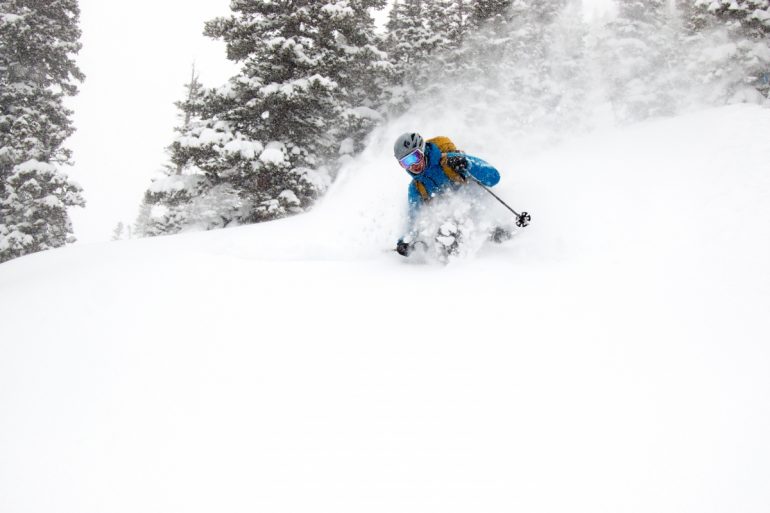The winter forecast according to squirrels, the Almanac, meteorology
Of course, there is the woolly worm. Fuzzy and a scant two inches long, it jauntily noodles across the gravel near my still sandaled feet. On its back are three alternating hunks of color: brown then black then brown. Surely that’s the forecast for a deep winter ahead, I think, striding past it.
This is the second woolly worm I’ve seen in the shortening days of early fall. I’m nearly certain — as in almost completely certain — it had the same stripe pattern. It must’ve. That’s the pattern after all that promises a big winter.
And then, while climbing at a nearby crag during that same week, I heard a rustle that made me start. A bear? Nope. A squirrel with an uncharacteristically bushy tail. We’re talking a tail that was the same size as the squirrel’s body. It was a big tail! Another sign? Check.
But, this weekend, the triple crown: at a friend’s wedding in Jackson, Wyoming, it snowed for a day straight (including the ceremony) and it wasn’t even October. Not only that, but prior to the wedding ceremony, I heard the sound of geese bugling and woke to see their bodies forming an uneven V as they soared south for the winter. Snowy wedding? Check. In September? Check. South-bound geese? Check. (Nevermind that they fly south every year…)
“Sign, sign, everywhere a sign,” Tesla’s song loops in my brain. It’s that time of year, after all, when everything is a sign. I could go on about the pattern of frost I spotted on the grasses by the river, the way the aspen groves are withholding gold later than usual, or the arrangement of seeds I observed in an apple core recently, but instead, how about something more reputable? Here are a few takes.
This week I read conflicting reports about the impending winter. On one side, the venerable Farmer’s Almanac claims that the eastern two-thirds of the US are in for a ‘polar coaster’ with frigid temps, deep snow and wide ranging temperature swings. That includes the Rockies, but precludes the Northwest and West Coast, which should see ‘normal’ temperatures and precipitation. The Farmer’s Almanac is long reputed for its forecasts based on meteorology and astronomy (sounds oddly close to astrology…). Lots of folks swear by it (it has been in existence for over 200 years, after all). Personally, I’m happy to believe anything that claims we’re in for a bunch of snow.
But what are meteorologists saying? Not much, yet. According to NOAA, neither El Niño (which Colorado residents can thank for the relentlessly deep snow of yesterday year) nor La Niña (typically leads to dry warm winters) will be particularly prominent this winter, leaving North America in a state of “La Nada”. How painfully ambiguous.
In a recent Mountain West News Bureau article Colorado State Climatologist Russ Schumacher summed up the forecast El Nino-La Nina standstill nicely: “when conditions are neutral like this, anything could happen.” I guess no news is good news. Or just, no news.
I suppose what this means is that all we can do is all we ever do with weather: wait for it to show up and act accordingly. (We could also consider sacrificing skis…forgive us). At least if you’re primarily ski touring, you don’t need to assume the risk of a pricy ski pass you might not take full advantage of. But I hear they have insurance for them now anyhow.
As for other parts of the country and the world, how do you find your long-range weather outlooks? What are the shapes of squirrels’ tales in your necks of the mountains? Let us know in the comments and keep doing those snow dances.
Manasseh Franklin is a writer, editor and big fan of walking uphill. She has an MFA in creative nonfiction and environment and natural resources from the University of Wyoming and especially enjoys writing about glaciers. Find her other work in Alpinist, Adventure Journal, Rock and Ice, Aspen Sojourner, AFAR, Trail Runner and Western Confluence.

